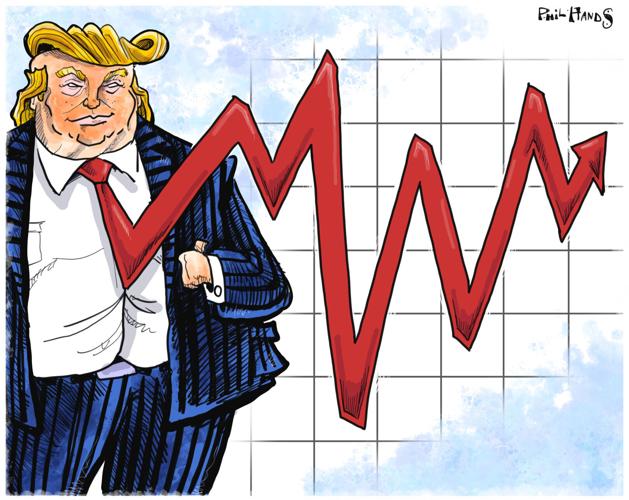According to the White House and congressional Republicans, their new budget law will spark economic growth of more than 3%.

Claudia Sahm
But reaching that goal will be far more difficult because of the law's $150 billion increase in immigration enforcement. The administration’s agenda of sharply lower immigration and mass deportations is bad for growth.
Unauthorized immigrants — people who enter the country illegally or received a temporary, humanitarian status at entry — are the administration’s primary focus as it restricts entry into the U.S., revokes humanitarian visas and deports those already in the country without authorization.
To bolster those efforts, the new law President Donald Trump signed this month includes $70 billion to increase border security and $75 billion for interior enforcement operations. It raises fees for applying for humanitarian visas and work authorizations and imposes a 1% excise tax on remittance transfers.
People are also reading…
The result will be a smaller population and labor force, and the adverse effects on growth are likely to be substantial.

After a surge from 2021 to 2024, unauthorized immigration is expected to fall sharply this year. Researchers at the Federal Reserve Bank of Dallas estimate that a near halt in unauthorized immigration would reduce growth in the gross domestic product by of a percentage point this year. (For context, average annual U.S. GDP growth for the last decade is about 2.5%.) If the Trump administration is able to reach its goal of 1 million deportations a year, then the drag on growth would intensify — subtracting 1.5 percentage points from GDP growth in 2027.
This level of deportation had been viewed as unattainable, mostly because the enforcement agencies lacked the resources to carry it out. This law could change that, making Immigration and Customs Enforcement the best funded of all federal law enforcement agencies.
The disruptions in the labor market from less immigration would be compounded by the U.S. economy now being close to full employment. The unemployment rate among U.S.-born workers was 2.7% in 2024, compared to 3.8% for foreign-born workers.
Many so-called experts predicted that President Donald Trump’s economic agenda would usher in an inflationary Armageddon. Yet the economy is thoroughly beating expectations.
The White House argues that reducing immigration and increasing deportations would free up jobs for U.S.-born workers. But the types of jobs that unauthorized immigrants most commonly hold are much less likely to be held by U.S.-born workers. Unauthorized immigrants are eight times more likely than U.S.-born workers to be house cleaners, for example, and more than twice as likely as authorized immigrants. The jobs for unauthorized immigrants also tend to offer lower pay and be more physically demanding.
The stark occupational differences make it less likely that deporting unauthorized immigrants will create job opportunities for U.S.-born workers. Mass deportations might even harm U.S.-born workers.
University of Colorado Denver  found that an immigration enforcement program from 2008 to 2013 reduced the employment and wages of U.S.-born workers. While U.S.-born and unauthorized immigrants may not be competing for the same job, their jobs can often be complementary.
For example, a reduction in the supply of construction laborers could lead to a decrease in the demand for construction site managers. Also, deportations would reduce the contributions of unauthorized immigrants to the local demand for goods and services, which could weigh on the local labor market.
Automation and AI won’t be able to immediately fill the gap left by fewer unauthorized immigrants. As with U.S.-born workers, there is an occupational mismatch. For example, AI can now replace tasks of data analysis in professional and clerical jobs, as opposed to manual work that unauthorized immigrants often perform. Advances in robotics could fill more of that gap — but at additional cost.
Mass deportations and tighter immigration controls also could have a chilling effect on authorized immigration, including workers and students in STEM fields, which could slow the development of new technologies. These immigrants tend to make their peak contributions to productivity several years after arrival. Their absence could subtract from longer-term growth, according to the Congressional Budget Office.
With an aging workforce and falling fertility, the U.S. needs a forward-looking immigration policy — one that goes beyond “less immigration and more deportation.” Without immigration, the U.S. population will begin to decline in 2033, which would be a constraint on the economy. If the White House wants to reach its goals for increasing U.S. economic growth, it should reconsider its goals for restricting U.S. immigration.

















